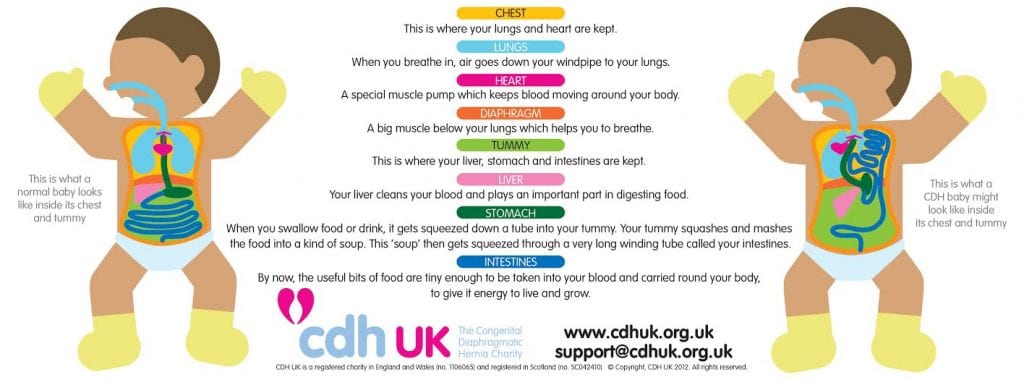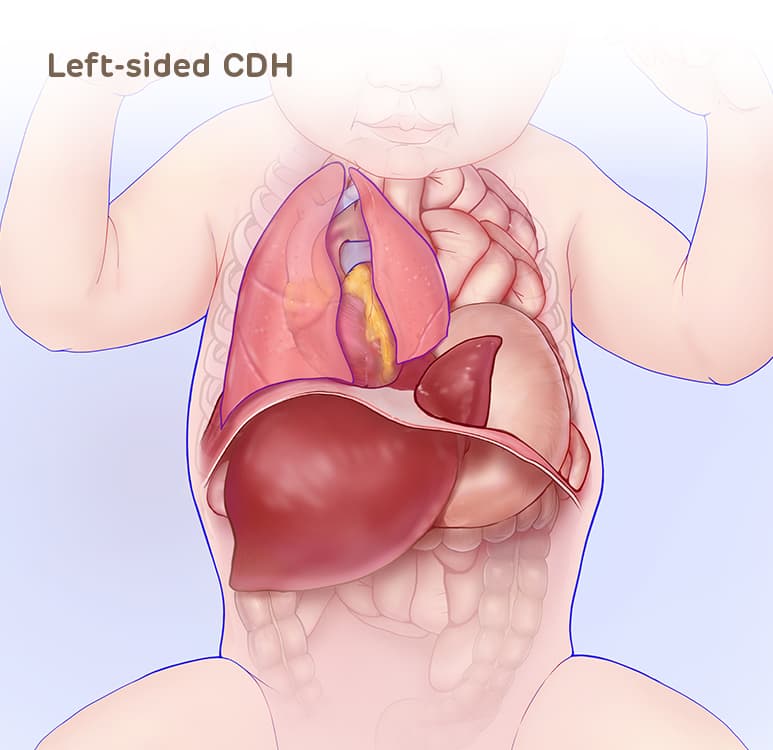what is cdh in unborn babies
We were told that CDH was a rare condition where the organs are rearranged with the level of severity ranging from moderate to extreme which you dont know until the baby is born. Your Basic Questions Answered.
Congenital Diaphragmatic Hernia Cdh Cs Mott Children S Hospital Michigan Medicine
When your child has a congenital diaphragmatic hernia CDH it means that theres a hole in that layer or rarely that the diaphragm is missing altogether.
. CDH occurs when the diaphragm. This hole allows the abdominal organs eg. In CDH the contents of your childs abdomen which may include the stomach intestines liver andor spleen may go through the hole and into.
This allows digestive organs into the chest cavity and restricts lung growth in the unborn child. A congenital diaphragmatic hernia CDH is a birth defect that occurs when the diaphragm does not develop properly and leaves an opening that allows the abdominal organs to push into the chest cavity. CHDs are present at birth and can affect the structure of a babys heart and the way it works.
This defect or hole in the diaphragm muscle. The diaphragm normally develops in the unborn baby by around the 7-10 week gestation period of the babys development and CDH occurs when the diaphragm fails to form correctly or fails to develop in the unborn baby allowing the abdominal contents to herniate into the chest cavity which in turn prevents the lungs from developing properly. The stomach and part of the intestines go up through the diaphragm in the chest cavity preventing the lungs from developing properly.
Gentle ventilation is used on all babies with CDH in our NIICU. Normally the diaphragm forms during the 6th through the 12th week of pregnancy. Diaphragmatic hernia is a birth defect where there is a hole in the diaphragm the large muscle that separates the chest from the abdomen.
CDH affects about one in every 2500 babies. In some unborn babies the diaphragm does not form properly and a hole develops. Babies with CDH have a hole in their diaphragm the wide flat muscle that separates the chest from the abdominal cavity.
Congenital diaphragmatic hernia CDH is an inborn. The diaphragm normally develops in your unborn baby by around the 7-10 week gestation period of your babys development and CDH occurs when the diaphragm fails to form correctly or fails to develop in your unborn baby allowing the abdominal contents to herniate into the chest cavity which in turn prevents the lungs from developing properly. Congenital diaphragmatic hernia CDH is a defect in an unborn babys diaphragm the muscle that divides the chest cavity and abdominal cavity.
The diaphragm forms over the course of the 6th through 12th weeks gestation in the fetus. Ultrasound to evaluate for the presence of a cdh and any other abnormalities fetal mri to evaluate the chest and abdomen in more detail and evaluate lung. When it does not form completely a defect called congenital diaphragmatic hernia CDH is created.
What determines if a CDH baby needs to go on ECMO. CDH occurs when the diaphragm does not close the right way during the babys development and abdominal organs push herniate through the defect into the chest cavity. Congenital diaphragmatic hernia or CDH is a condition that develops before birth.
This prevents your babys lungs from developing properly Lewis 2017 Tidy 2015. Josh Hensley had not only one but two babies born with congenital diaphragmatic hernia CDH a birth defect where the gut and liver protrude into the chest cavity. They gave my baby a 30 percent chance.
When an organ pushes through the hole it is called a hernia. Congenital diaphragmatic hernia CDH occurs in an unborn baby when there is a hole in or incomplete formation of the diaphragm the muscle under the lungs that is responsible for breathing. Gentle ventilation refers to providing breathing support to babies with CDH by minimizing the percentage of oxygen number of breaths and amount of pressure needed to prevent secondary damage.
Interventions described to date include maternal antenatal corticosteroid administration and prenatal tracheal occlusion to improve lung. A diaphragmatic hernia usually develops about 9 to 10 weeks into pregnancy but might occur as early as 5 to 6 weeks. An Unborn Baby with CDH.
Spleen liver intestines stomach to move into the chest and prevents the lungs from developing normally because of the lack of space. Congenital diaphragmatic hernia CDH occurs in an unborn baby when there is a hole in or incomplete formation of the diaphragm the muscle under the lungs that is responsible for breathing. Spleen liver intestines stomach to move into the chest and prevents the lungs from developing normally because of the lack of space.
Most children are diagnosed with CDH receive the diagnosis at the standard 20 week anatomy ultrasound. CHDs can vary from mild such as a small hole in the heart to severe such. Apparently one in 2500 babies in Australia are born with it and generally only 50 percent of those survive.
Congenital diaphragmatic hernia cdh is a defect in an unborn babys diaphragm the muscle that divides the chest cavity and abdominal cavity. Congenital diaphragmatic hernia CDH is a birth defect that occurs when a babys diaphragm doesnt form correctly during fetal development typically around 9 to 10 weeks gestation. Treatments are now possible in pregnancy.
Organs in the abdomen such as intestines stomach and liver can move through the hole in the diaphragm and upwards into a babys chest. If the diaphragm doesnt form completely CDH occurs. He talks about the cloud of uncertainty that surrounds parents who just learned their child would be born with this devastating defect.
CDH means your babys diaphragm has a hole in it which may allow the big organs from his tummy to push up and squash his lungs. This hole allows the abdominal organs eg. They can affect how blood flows through the heart and out to the rest of the body.
There are two types of congenital diaphragmatic hernia. Congenital diaphragmatic hernia CDH occurs when the diaphragm does not develop at all develops partially or develops a hole in it. For babies born with a CDH surgery in early life is necessary but even with new surgical techniques there can be a poor outlook and many long-term medical problems.
The wide flat muscle that separates the chest and abdominal cavities is called the diaphragm. CDH may occur as an isolated problem known as isolated CDH or in association with other abnormalities. There is no known way to prevent CDH and there is nothing a mother did or does that could cause her unborn baby to develop CDH.

Congenital Diaphragmatic Hernia Cdh About Diagnosis Treatment Ssm Health

Department Of Surgery Congenital Diaphragmatic Hernia
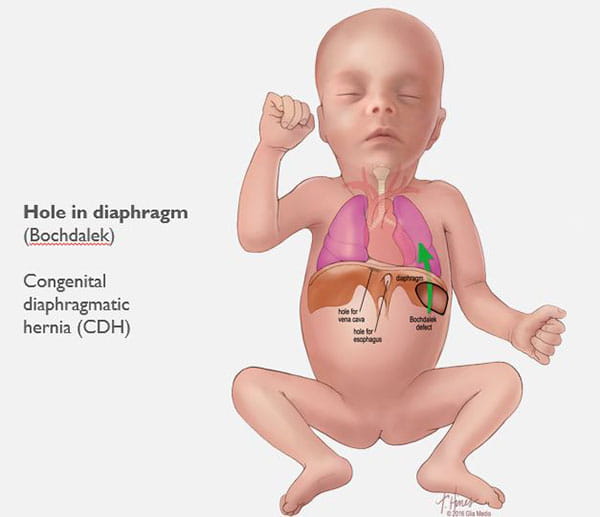
Congenital Diaphragmatic Hernia Cdh Fetal Diagnosis Repair Fetal Care Center
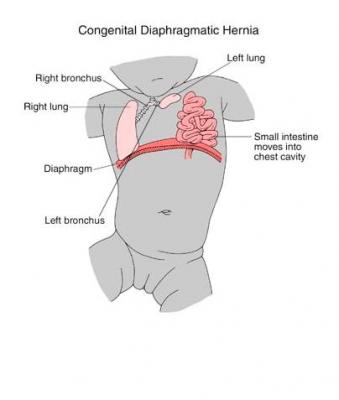
Congenital Diaphragmatic Hernia Fetal Health Foundation

Congenital Diaphragmatic Hernia Cdh Babycentre Uk
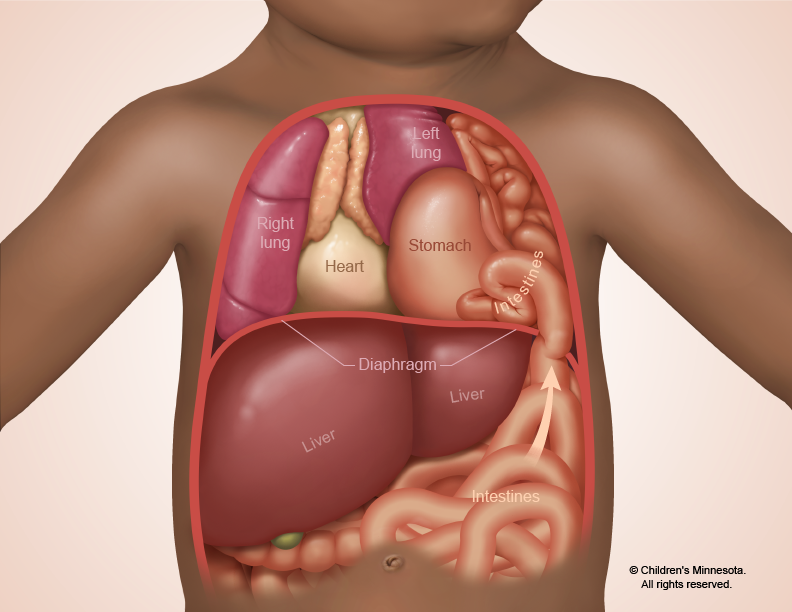
Congenital Diaphragmatic Hernia Cdh Children S Minnesota

Fetal Endoscopic Tracheal Occlusion Feto Pavilion For Women
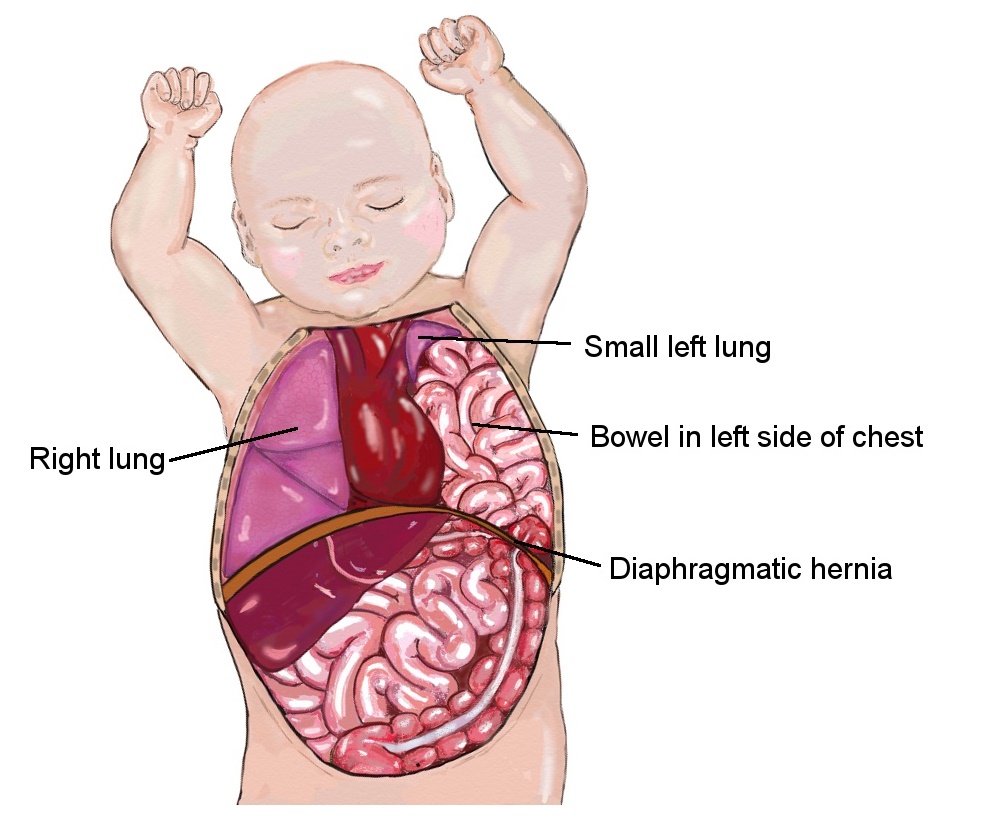
Congenital Diaphragmatic Hernia Cdh Royal Manchester Children S Hospital

Congenital Diaphragmatic Hernia Cdh Babycentre Uk

Cdh The Rare Condition That Threatened The Life Of This Mum S Unborn Baby

Congenital Diaphragmatic Hernia Cdh Information For Parents Gov Uk
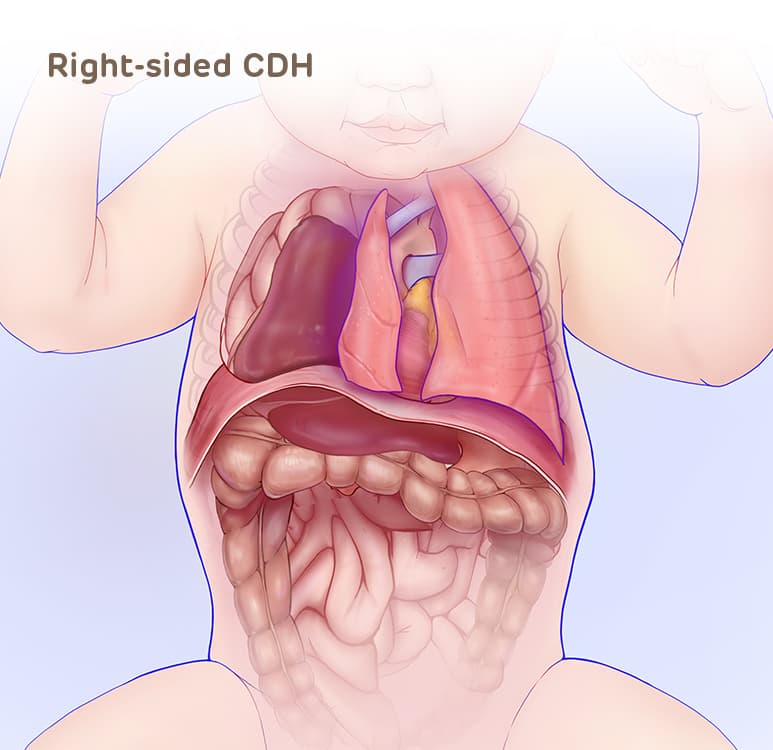
Right Vs Left Cdh Children S Hospital Of Philadelphia
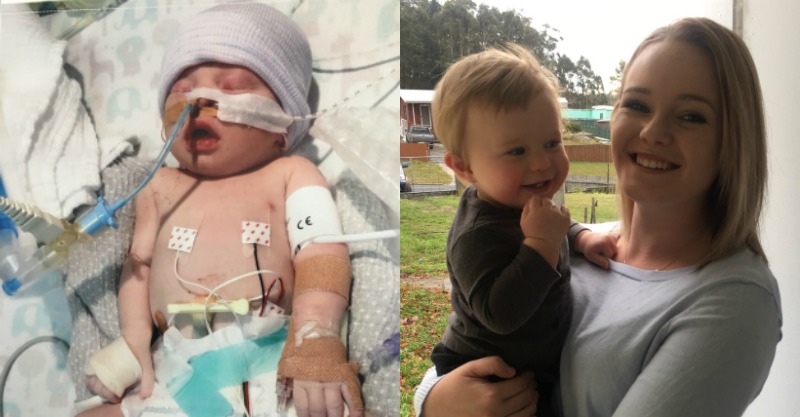
Cdh The Rare Condition That Threatened The Life Of This Mum S Unborn Baby

My Baby S Cdh Diagnosis Claire S Story Bliss
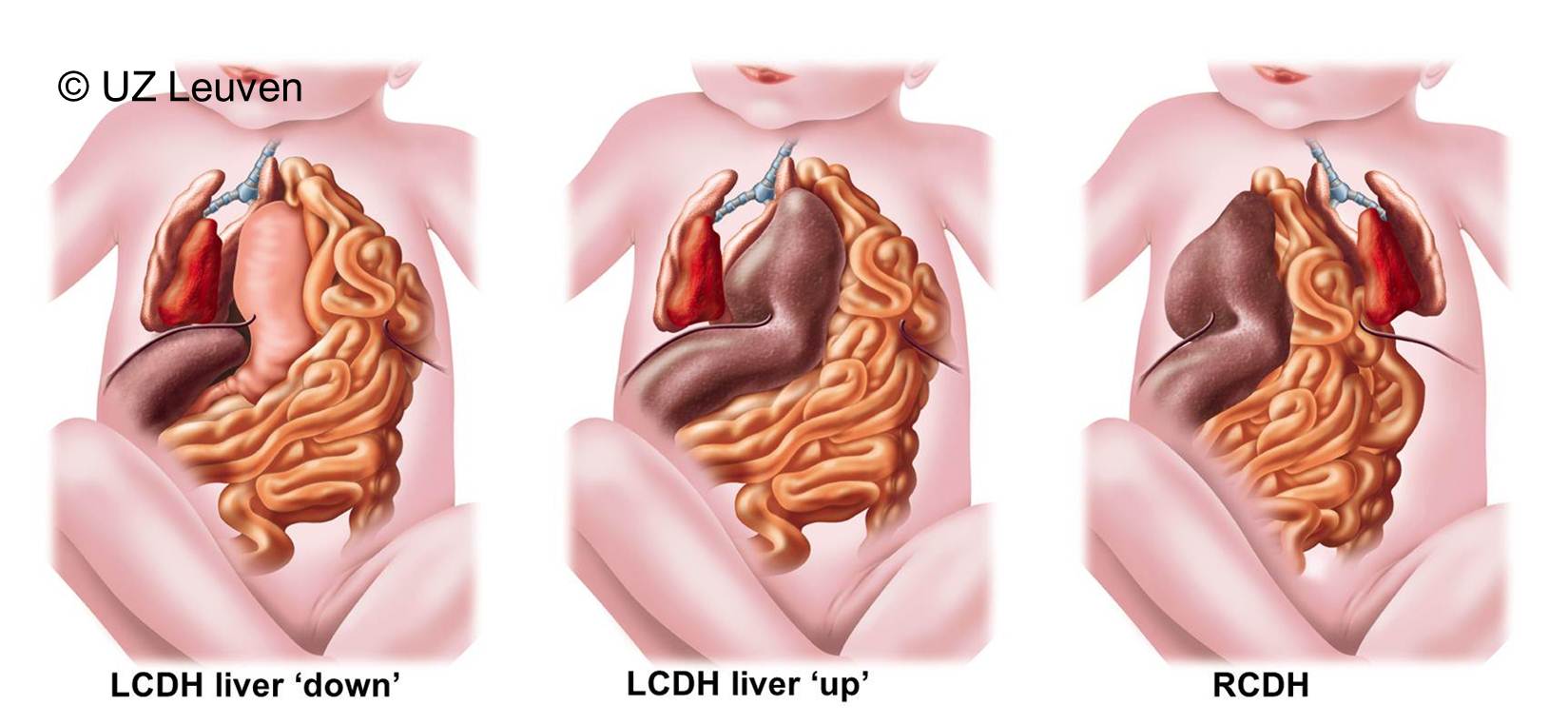
Cdh General Information Totaltrial
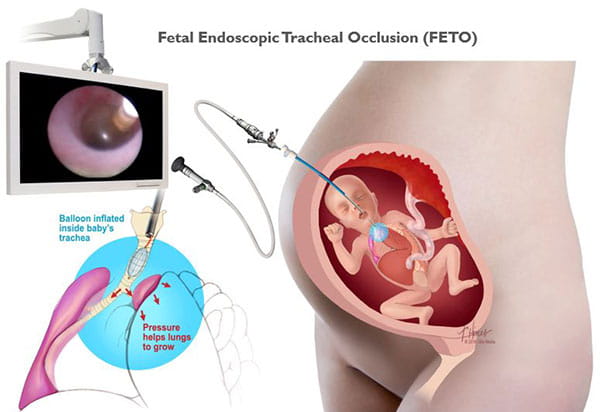
Congenital Diaphragmatic Hernia Cdh Fetal Diagnosis Repair Fetal Care Center

